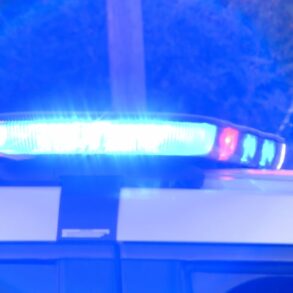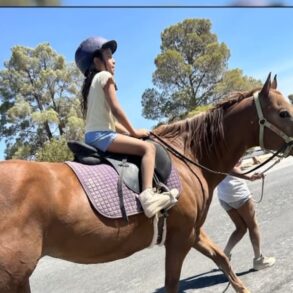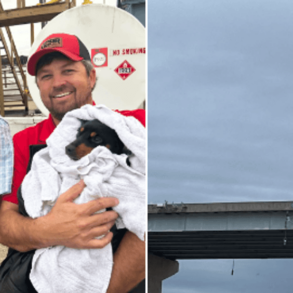
In a sea of trees and shrubs, detector dog Encore doesn’t need his eyes to pick out a rare green orchid in Fort Walker, VA. All he needs is his nose and his handler’s promise of a squeaky ball as a reward.
Trained dogs like Encore are helping conservationists in the Chesapeake Bay watershed. The U.S. Department of Agriculture’s Maryland Detector Dog Program used the dogs’ powerful sense of smell to eradicate invasive nutria harming wetlands on the Delmarva Peninsula. Now, dogs are setting their sights, or noses, on the rare small whorled pogonia orchid in Virginia.
Humans have long used dogs to detect everything from game animals to drugs and bombs. In the last 100 years, specially trained dogs have been used in conservation roles, too.
“In terms of conservation and wildlife, there hasn’t been a large use, but I do believe we’re starting to see that change, and we’re starting to see more,” said Trevor Michaels with the USDA Maryland Detector Dog Program.
Before he was a dog handler, Carl Dunnock was with the USDA when it was trying to eradicate nutria in the Delmarva Peninsula. The invasive rodents were introduced to the Blackwater National Wildlife Refuge and Choptank River in the 1940s so people could hunt them for fur. But the creatures often eat marsh plants and disrupt habitats.
Dunnock and his colleagues used traps and hunting dogs to locate most of the nutria. But the population eventually became too low for the hunting dogs to be effective. So, the USDA captured, sterilized and inserted trackers into male nutria to locate the remainders.
“If we’re potentially looking for a transient animal that could be moving up to nine miles a night, maybe we need another tool in our arsenal,” Dunnock said. “And that’s when we partnered with the National Detector Dog Training Center.”
While hunting dogs were trained to chase nutria, conservation dogs were trained to find nutria scat. This method helped locate the last of the population and led to nutria being officially eradicated in 2018.

Then, the USDA unleashed the dogs onto new quests, such as finding rare orchids.
The U.S. Fish and Wildlife Service listed the small whorled pogonia orchid as threatened under the Endangered Species Act in 1982. It grows from Maine to Georgia. However, its population fell after decades of development and plant collection.
Researchers see orchids as “canaries in a coal mine.” Senior scientist Melissa McCormick with the Smithsonian Environmental Research Center said they’re indicators of environmental quality, needing both pollinators and mycorrhizal fungi from fallen trees to grow.
“They do all kinds of weird things, but it makes them so much fun,” McCormick said.
Orchid seeds are too small to make room for nutrients. So, when fungi enter the orchid embryo, the flower absorbs nutrients by digesting the fungi. This relationship is difficult to replicate in the lab, and the Smithsonian is the only institution to do so. That means saving the orchids depends on finding and protecting them in the wild.
The U.S. Fish and Wildlife Service’s plan is to learn how many of the flowers remain on protected lands, so researchers can manage them or save them from development.
But the small whorled pogonia orchid is difficult to find because its green coloring blends into the surrounding forest. The flowers also hide underground when environmental conditions aren’t ideal.
So the U.S. Fish and Wildlife Service decided to try detector dogs. Endangered species biologist Cherry Keller enlisted the program’s help in 2022, launching the effort in partnership with the Smithsonian Environmental Research Center, North American Orchid Conservation Center and United States Botanic Garden.

Handlers Dunnock and Carl Messick trained the dogs to find the orchids by placing glass vials in a room. Some held nothing while others held dried leaves from the flowers. Over time, the dogs learned to sit and bark once they found the leaves. This way, they wait to get their favorite toy and won’t accidentally trample the plant out of excitement. Then, the handlers tested whether the dogs could find the dried orchid leaves placed in tea bags outside.
Choosing the right dog for the job remains a challenge in the field. There is no standardized selection process or robust set of criteria.
The Maryland Detector Dog Program usually sources their canines from shelters and chooses youngsters highly motivated by toys. The dogs also need to perform well in water. So, the handlers often opt for labradors, like Encore and Grand, who were bred for hunting waterfowl.
The dogs found small whorled pogonia orchids in Fort Walker, VA, this past summer. Keller said there’s no current record of them in Maryland, but she can’t be sure until they look.
Encore and Grand cover ground faster than humans by following their nose, McCormick said. The dogs employed by the USDA have surveyed more than 250 miles and found 320 groups of orchids. They found some in areas where surveyors said none were present.
“[The dogs] have definitely shown that they can find them better than people,” said the USDA’s Michaels.
Their noses are so fine-tuned to small whorled pogonia orchids that they ignore mimics. They also bark at their handlers even when none are visible — it’s likely the orchid is dormant underneath the soil. The handlers won’t know for sure until the flowers pop up in their own time.
The survey results will inform the 2027 U.S. Fish and Wildlife Service orchid assessment.
“It’s the greatest job ever,” Messick said. “We get to hike in the woods with our dogs every day and help the environment and help science.”
Dunnock decided he will adopt Encore after the dog retires in six months. Encore will have to share the bed with Dunnock’s first canine partner, Hector, who loves to take naps.
This post was originally published on this site be sure to check out more of their content.




















































